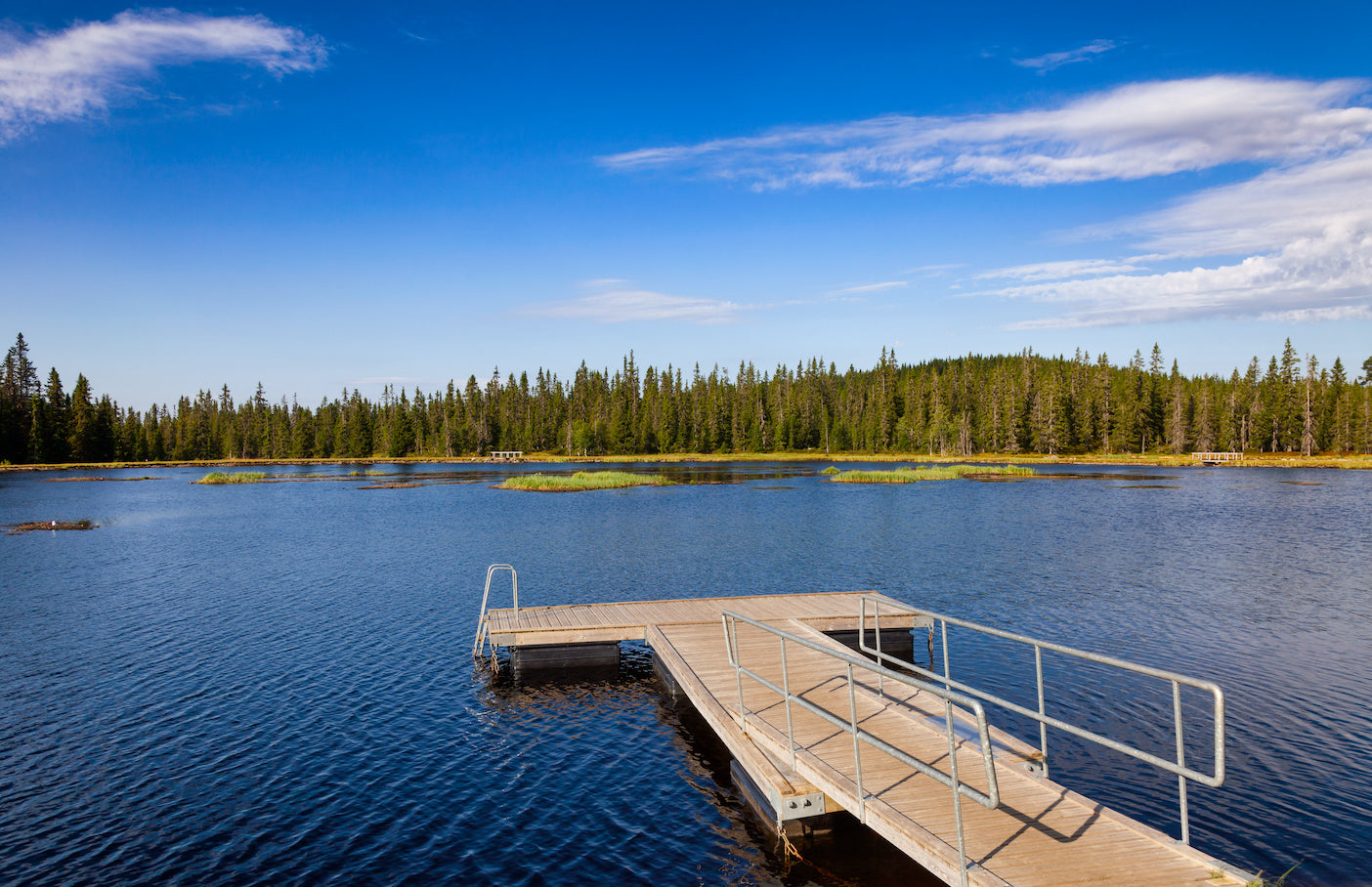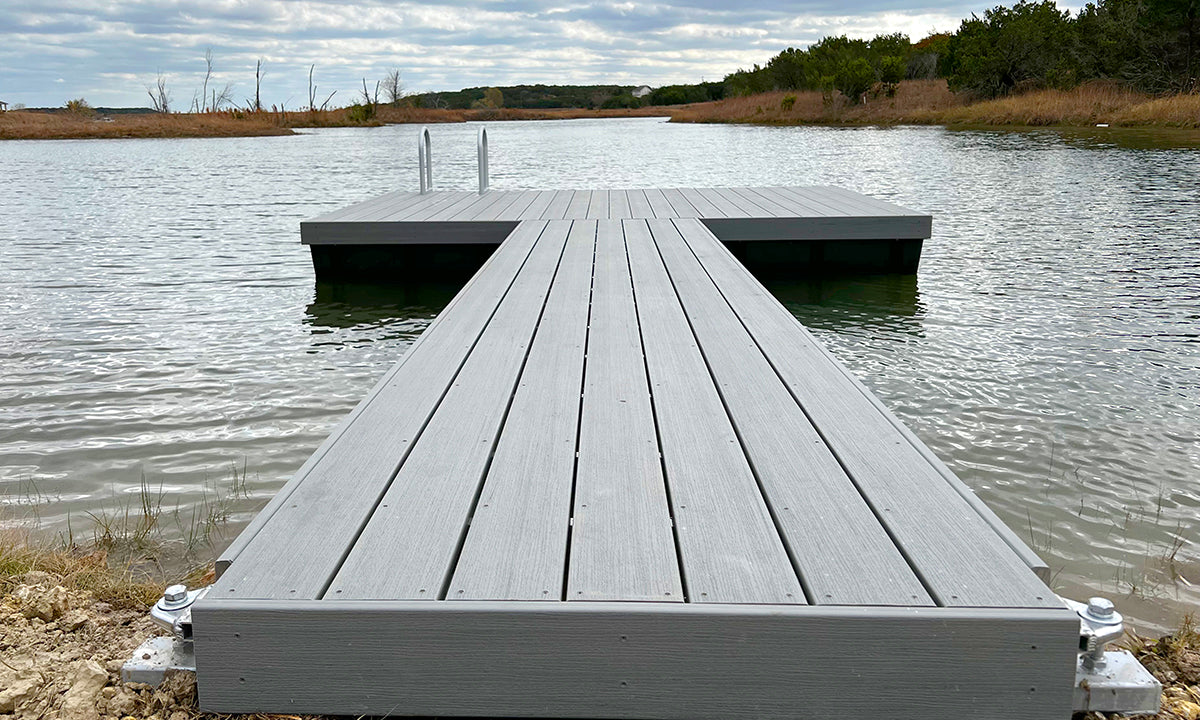Discover the Perfect Floating Dock Builder to Bring Your Waterside Vision to Life
Discover the Perfect Floating Dock Builder to Bring Your Waterside Vision to Life
Blog Article
Create the Perfect Docking Service With Floating Docks
Floating docks present a functional service for a selection of maritime demands, adjusting seamlessly to changing water degrees and varied vessel kinds. Their modular nature allows for fast setup and moving, yet the selection of appropriate materials and layout attributes is crucial for ensuring both performance and visual appeal. As we check out the vital elements that add to the effectiveness of floating docks, several essential aspects concerning security and upkeep will certainly emerge, questioning about how to enhance your docking experience. The succeeding conversation will certainly brighten these crucial considerations.

Advantages of Floating Docks
Floating docks deal countless benefits that make them an ideal choice for various maritime applications. Among the main advantages is their flexibility to altering water levels. Unlike fixed docks, floating docks fluctuate with the tide, making certain regular access for vessels. This function is particularly essential in locations vulnerable to significant tidal fluctuations or seasonal water level modifications.
In addition, floating docks are commonly simpler and quicker to mount compared to conventional fixed structures. Their modular design allows for simple setting up and disassembly, facilitating maintenance and moving when required. This adaptability is particularly beneficial for temporary applications or in settings where problems may transform.
Floating docks likewise have a tendency to be more eco-friendly, as they lessen interruption to the seabed and bordering marine environments. Their buoyant nature decreases the threat of damages to aquatic life, advertising a healthier environment. These docks can be customized to fit various vessel sizes, making sure that they meet particular operational demands.
Eventually, the combination of versatility, convenience of installment, and environmental considerations makes floating docks a highly reliable solution for a vast array of maritime demands.
Picking the Right Products
Picking the proper materials for floating docks is critical to make sure resilience, longevity, and security. The option of products straight affects the dock's performance in various environmental problems, consisting of exposure to water, sunlight, and potential wear from aquatic web traffic.
Typical materials utilized for floating docks include aluminum, wood, and high-density polyethylene (HDPE) Light weight aluminum is lightweight, corrosion-resistant, and requires very little maintenance, making it an excellent choice for long life. Its preliminary price can be greater contrasted to various other materials.
Timber, while aesthetically appealing and giving a standard appearance, can be susceptible to rot and bug damages if not properly dealt with. For that reason, utilizing pressure-treated timber or normally sturdy varieties like cedar or redwood can reduce these issues.
HDPE is a preferred option as a result of its resistance to UV rays and chemicals, in addition to being eco friendly. dock company. It is light-weight and offered in different colors, permitting personalization
Inevitably, the appropriate product option will certainly depend upon details requirements, consisting of budget plan, preferred appearances, and ecological considerations. Cautious evaluation of these variables will certainly cause a resilient and effective floating dock option.
Design Considerations for Security
When designing floating docks, making sure security is an essential aspect that can substantially influence their capability and safety and security. Stability in floating dock layout is affected by different factors, including buoyancy, weight distribution, and the setup of components.
Weight distribution is essential; uniformly dispersing loads throughout the dock prevents turning and boosts security. Larger designs can use boosted security, particularly in visit this page rough water problems, while longer docks might require added assistances to avoid sagging.
Another key consideration is the ecological influence, including wave action and wind. Including attributes such as sidewalls or skirting can assist minimize the results of environmental pressures, preserving stability in negative conditions. Inevitably, a mix of thoughtful layout, material option, and understanding of ecological factors will generate a drifting dock that fulfills both security and safety demands.
Setup Tips and Strategies

Next, protect the essential permits and stick to local guidelines, which may dictate installment techniques and ecological factors to consider. If required, involve a certified specialist look at more info experienced in floating dock setups. Use top quality materials made for aquatic atmospheres to improve sturdiness and longevity.
When placing the dock, straighten it alongside the coastline to help with very easy gain access to. Make sure that the anchoring system is robust, using concrete blocks or helical anchors to maintain the dock versus wind and wave action. It's essential to account for seasonal water level fluctuations, consisting important source of potential ice activity in colder environments.
During the installment, confirm the dock's floatation and security prior to settling the anchoring. On a regular basis evaluate the installment for any indicators of wear or damages. By adhering to these tips and strategies, you can accomplish a secure, practical, and cosmetically pleasing floating dock setup that fulfills your needs.
Upkeep and Care Guidelines
Maintaining and caring for floating docks is critical to lengthening their life-span and making sure safe usage. Normal examinations ought to be conducted to identify any indicators of wear, damages, or aquatic growth. Seek fractures, loosened installations, or discolored areas on the dock's surface, as these problems can endanger structural integrity.
Cleaning is important. Use a pressure washer to eliminate algae, barnacles, and particles, which can gather in time. For persistent growth, take into consideration eco friendly cleaner that will not hurt marine life.
In addition, examine the mooring lines and supports frequently to guarantee they are cost-free and safe and secure from rust. Change any kind of torn or harmed lines promptly to keep stability.
During extreme climate, such as storms or freezing problems, take preventive measures. Safeguard the dock with extra mooring lines and, if feasible, eliminate any type of detachable parts to stop damages.
Conclusion
Finally, the application of floating docks presents a effective and versatile docking remedy suitable for various maritime applications. Their flexibility to varying water degrees, incorporated with a modular layout, enables for easy personalization and moving. Selecting suitable products improves both toughness and visual charm, while careful consideration of stability ensures safety and security and longevity. With proper installment and routine upkeep, floating docks can give trustworthy and effective docking experiences for a vast array of vessels.
As we check out the vital aspects that add to the efficiency of floating docks, several vital elements relating to stability and upkeep will certainly arise, increasing questions about exactly how to optimize your docking experience. Unlike taken care of docks, floating docks surge and loss with the tide, ensuring regular availability for vessels.When developing floating docks, making certain security is an essential aspect that can dramatically affect their functionality and safety. Security in floating dock layout is affected by numerous aspects, consisting of buoyancy, weight distribution, and the setup of parts. Inevitably, a mix of thoughtful style, product option, and understanding of environmental aspects will generate a floating dock that fulfills both stability and security needs.
Report this page